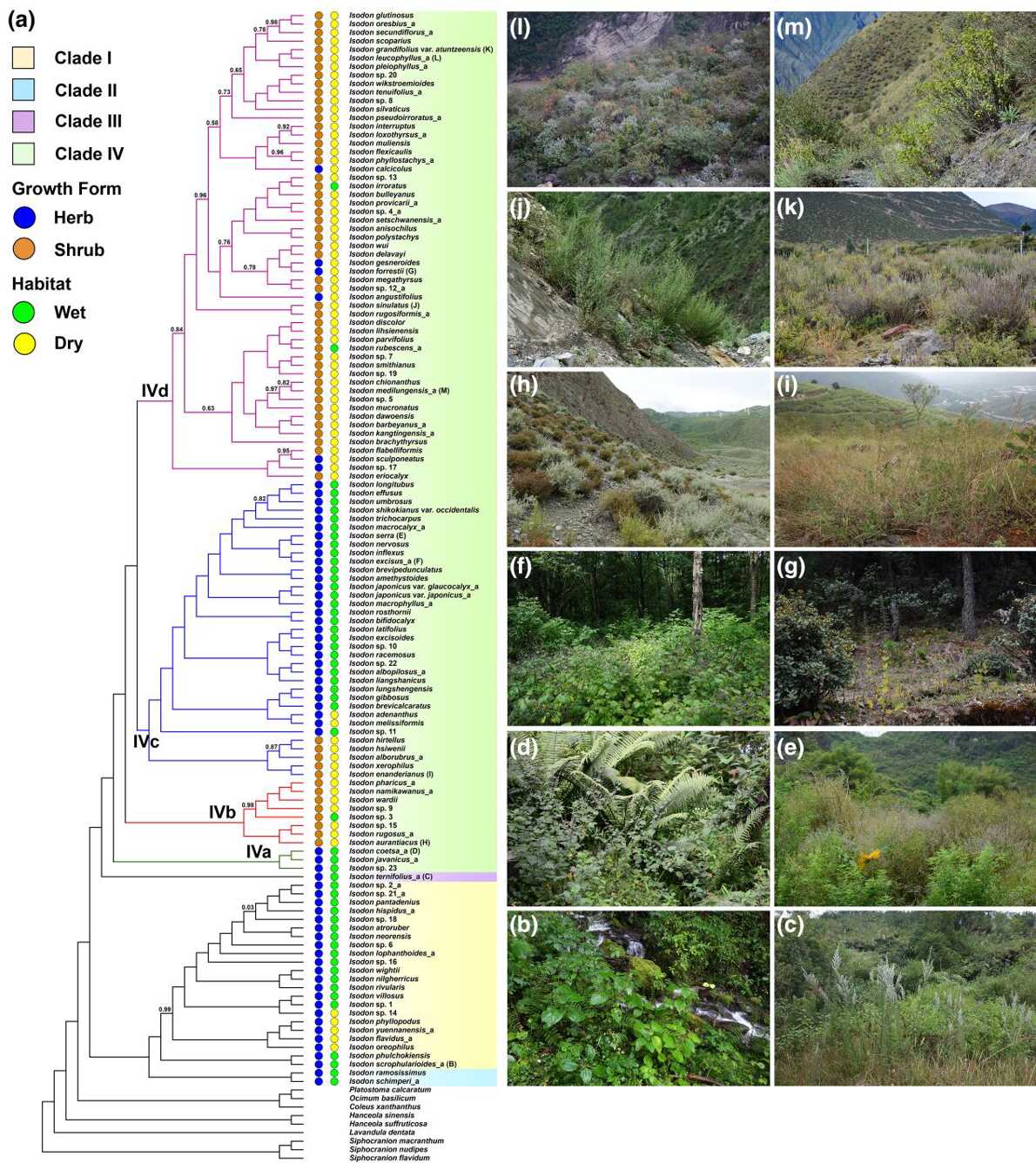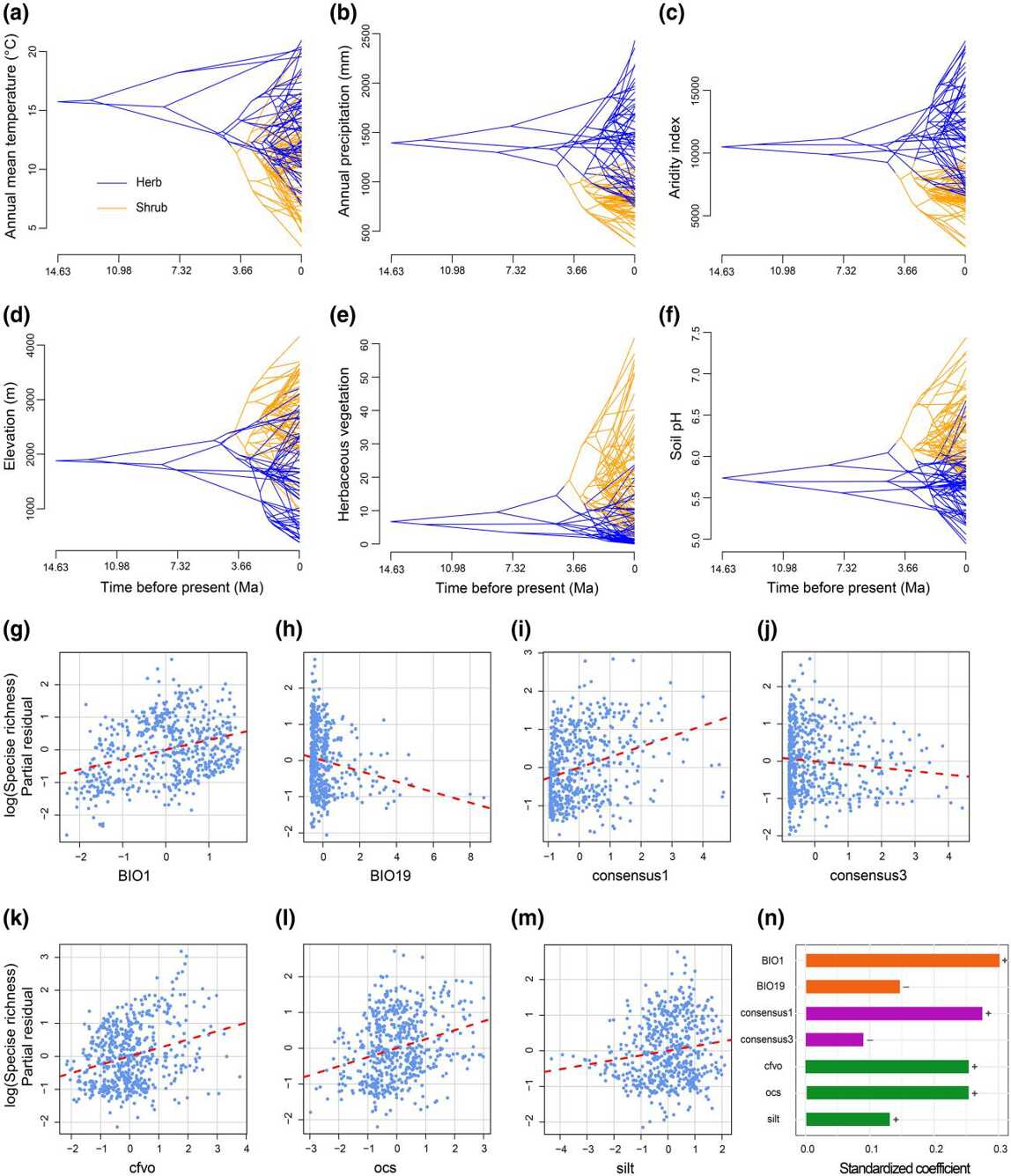Montane plant radiations have attracted considerable interest, especially for the alpine floras of the Andes and Hengduan Mountains. However, little is known about the diversification of lineages in the adjacent inter-montane valleys.
Southwest China is characterized by high plateaus, large mountain systems, and deeply incised dry valleys formed by major rivers and their tributaries. In the Hengduan Mountains, over 3,000 seed plant species occur in the dry valleys in southwest China, with nearly one-third endemic to this region.
As a unique biome, this river valley ecosystem is at risk due to climate change and increasing intensity of human activities. Indeed, dryland biomes, which span over 40% of earth’s land surface, are one of the most threatened and vulnerable ecosystems, yet are widely being overlooked in biodiversity research.
Understanding the evolutionary dynamics underlying the development of drought-avoidance functional traits and their correlation with arid conditions is essential for informing conservation planning and implementation.
Isodon (Schrad. ex Benth.) Spach (Ocimeae, Nepetoideae, Lamiaceae) is a genus of ca. 140 species mainly distributed in subtropical to tropical Asia. The genus is most diverse in southwest China, particularly in the dry valleys in the Hengduan Mountains. Isodon Spach been considered the center of diversity for the genus.

Fig. 1. Phylogeny, growth form, and habitat diversity of Isodon
Species of Isodon are found in nearly all major river valleys of southwest China, making it an ideal lineage to explore the origin and diversification of plants adapted to these dry valley systems.
The research group led by XIANG Chunlei at the Kunming Institute of Botany, Chinese Academy of Science (KIB/CAS) focuses on the taxonomy and systematics of Lamiaceae.
The team previous studies on Isodon have revealed its species diversity (Xiang et al., 2012, 2014; Chen et al., 2014, 2016, 2017, 2019, 2021, 2022, 2024). In order to address the aforementioned knowledge gap, the research team reconstructed a robust phylogeny encompassing nearly 90% of the approximately 140 extant Isodon species using transcriptome and genome-resequencing data and investigated the macroevolution of the genus.
Phylogenetic reconstruction revealed four major clades within Isodon. Biogeographic analyses suggested a rapid radiation of Isodon during the Pliocene that coincided with a habit shift from herbs to shrubs and a habitat shift from humid areas to dry valleys.
The shrubby growth form likely acted as a preadaptation allowing for the movement of Isodon species into these dry valleys. Ecological analyses highlight drought-related factors as key drivers influencing the niche preferences of different growth forms and species richness of Isodon.
The interplay between topography and the development of the East Asian monsoon since the middle Miocene likely contributed to the formation of the dry valley biome in southwest China.

Fig. 2. Reconstruction of ancestral niches for the herbs and shrubs and determinants of species diversity of Isodon
This study enhances our understanding of evolutionary dynamics and ecological drivers shaping the distinctive flora of southwest China and reveals the strategies employed by montane plants in response to climate change and dryland expansion, thus facilitating conservation efforts globally.
The study, titled "Rapid radiation of a plant lineage sheds light on the assembly of dry valley biomes", was published in Molecular Biology and Evolution.
Collaborators from the UK, USA, India, and Huazhong Agricultural University also participated in the research. This research was funded by the Strategic Priority Research Program of Kunming Institute of Botany, Chinese Academy of Sciences, the open research project of the Germplasm Bank of Wild Species, Kunming Institute of Botany, Chinese Academy of Sciences, the Yunnan Fundamental Research Projects, and the CAS Interdisciplinary Team of “Light of West China”.
Editor:YANG Mei




